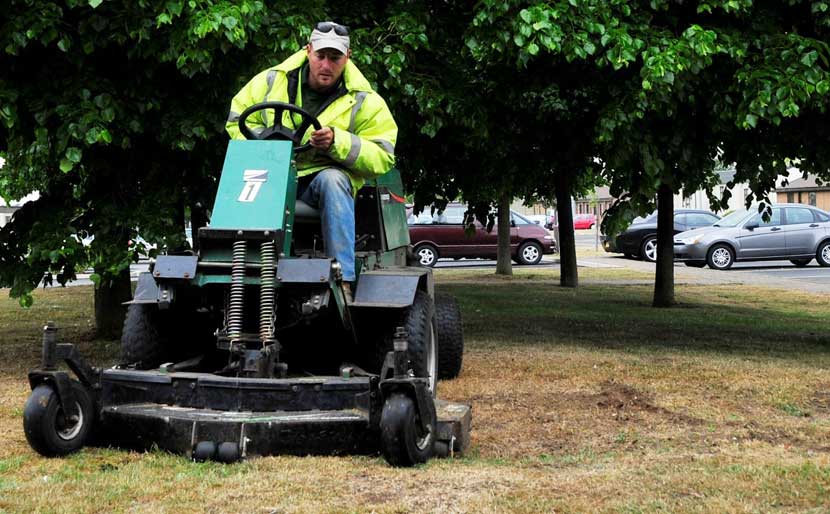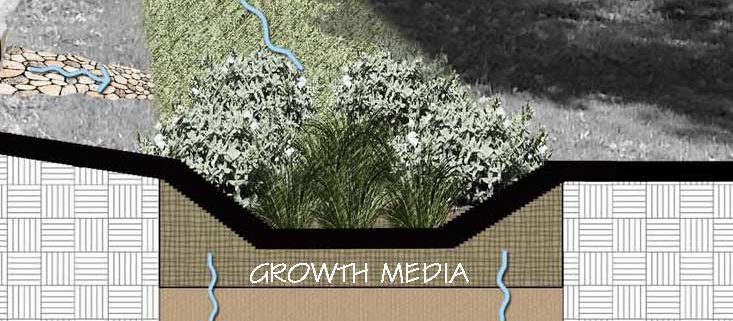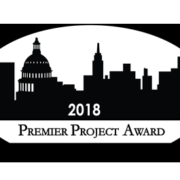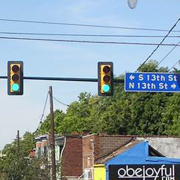Benefits of Installing Green Infrastructure in Parks for MS4 Compliance
Last week, we shared how parks and recreational space can be the ideal location for green infrastructure and streambank stabilization projects that help you meet your MS4 compliance and pollutant reduction plan goals. This week we discuss the benefits of this approach in another excerpt from an article we published in the April 2018 issue of Borough News magazine.
As we stated last week, the latest round of MS4 permitting requires many municipalities to implement a pollutant reduction plan that reduces the level of pollutants in their stormwater by as much as 10%. This will likely involve the construction of Best Management Practices (BMPs) like rain gardens or streambank stabilization projects, and the most expensive part of BMP construction is often acquiring the land on which to build. This is why parks and recreational space can be an ideal location for BMPs because it’s land you already own; there are no land acquisition costs.
Middletown Borough is proposing to meet the majority of its MS4 pollutant reduction plan goal with the installation of a bioretention basin along the east side of Hoffer Park. This basin will be created by excavating an existing corrugated metal stormwater pipe and backfilling the trench with layers of bioretention bed components like engineered media, topsoil and mulch. Water-tolerant native plantings will then be planted there.
Wilkins Township in Allegheny County is also proposing improvements to one of its municipal parks as part of it MS4 pollutant reduction plan. The township is upgrading Lions Park to include ADA accessible routes, a paved walking trail, playground, deck hockey and pavilion. Many green infrastructure elements are being incorporated into the park design in order to manage stormwater on-site. For example, soil in all open spaces will be amended to enhance its structure and ability to promote infiltration. A rain garden will be planted along with vegetated channels and a vegetated filter strip, as well.
Green infrastructure can save money in other ways, too.
- Funding agencies often prefer projects that provide multiple benefits, so municipalities may be able to increase the opportunity for grant money by combining recreational and environmental goals into the same park improvement project. As part of the grant requirement for funding from the Pennsylvania Department of Conservation and Natural Resources, Lower Swatara Township integrated water quality BMPs into the rehabilitation plan for the playground at two of their community parks. The runoff from the playground area will be conveyed into rain gardens adjacent to the new playground and will be treated on site. The walkways from the parking area to the new playground will be porous asphalt to minimize the amount of runoff. Additionally, educational signage will be installed to educate playground visitors on the environmental and water quality benefits provided by the rain gardens.
- Captured rainwater can be used for irrigation or toilet flushing, thereby reducing potable water consumption.
By SuSanA Secretariat [CC BY 2.0 (http://creativecommons.org/licenses/by/2.0)], via Wikimedia Commons
A rainwater harvesting system
But the benefits of incorporating green infrastructure into your park facilities go beyond saving money:
Green infrastructure can improve the recreation experience for park users.
- Natural vegetation can provide a habitat for wildlife and offer the opportunity for wildlife viewing.
- Vegetation can also reduce noise and provide visual barriers to set off private areas for picnics or meditation.
- Green infrastructure helps to ensure adequate flows in ponds and streams , so that park users can enjoy them.
Photo by ChattocaneeNF. Used under a Creative Commons license.
- It is generally more attractive than large swaths of concrete piping and basins.
- It improves drainage, which means park facilities are less likely to flood (and less subject to closure or cancellation of activities after a storm). North Middletown Township has proposed a bioretention basin in Village Park as part of its Chesapeake Bay pollutant reduction plan, but an added benefit of the basin is that it will help to prevent the frequent flooding of a playground within the park during heavy rain events.
Green infrastructure can reduce maintenance.
- Standing water is a breeding ground for mosquitos, so maintenance personnel must be vigilant to prevent it. Improving drainage will reduce the effort needed to eliminate standing water.
- Turf grass can be high maintenance. Rain gardens and bioswales can be populated with native vegetation that requires less watering, no chemicals, and less mowing or weeding.

- Vegetation along streambanks can slow or even absorb runoff before it reaches the stream, thereby reducing erosion. The vegetative root structures hold sediment in place to further reduce streambank erosion.
Installing green infrastructure in parks provides an opportunity to educate the public and encourage good habits.
- Signs explaining how green infrastructure works can be used to meet MS4 education requirements under Minimum Control Measure #1. Cranberry Township, Butler County, is including signage about the bioswales they’re installing in Graham Park for this very reason. Schools and community groups can visit the site and learn how stormwater is managed. Park visitors can read the signs and may even be inspired to install green infrastructure on their own property. This extends the environmental benefits even further. The Wyoming Valley Sanitary Authority has pioneered an innovative regional partnership among more than 30 municipalities to cooperate on stormwater management and MS4 compliance. Their plan includes the creation of stormwater parks that will combine green infrastructure with signage to educate the public. (You can read more about WVSA’s award-winning initiative here. You can also read more about the wide-ranging services we’ve provided at Graham Park.)
Photo by Doug Kerr. Used via a Creative Commons license.

Signage turns green infrastructure in parks into an educational piece that can be used to meet MS4 MCM #1 requirements.
To sum it up: Incorporating green infrastructure into your park and recreational facilities allows you to provide a better experience for your residents while minimizing the cost of complying with environmental regulation and reducing future maintenance needs. It’s win-win-win!
In next week’s post, we’ll talk about how municipalities can incorporate green infrastructure into their parks and recreational spaces, including how to identify locations for green infrastructure and how to coordinate with other groups to get the projects built.
Ben Gilberti, P.E., manages civil engineering services provided by Herbert, Rowland & Grubic, Inc. (HRG) throughout Western Pennsylvania, Ohio and West Virginia. He assists with the design of municipal infrastructure like sidewalks, stormwater systems, and sewer facilities.
James Feath, R.L.A., is a senior landscape architect at HRG. He has 20 years of experience in the planning and design of public spaces, including parks, trails, and recreational facilities.









